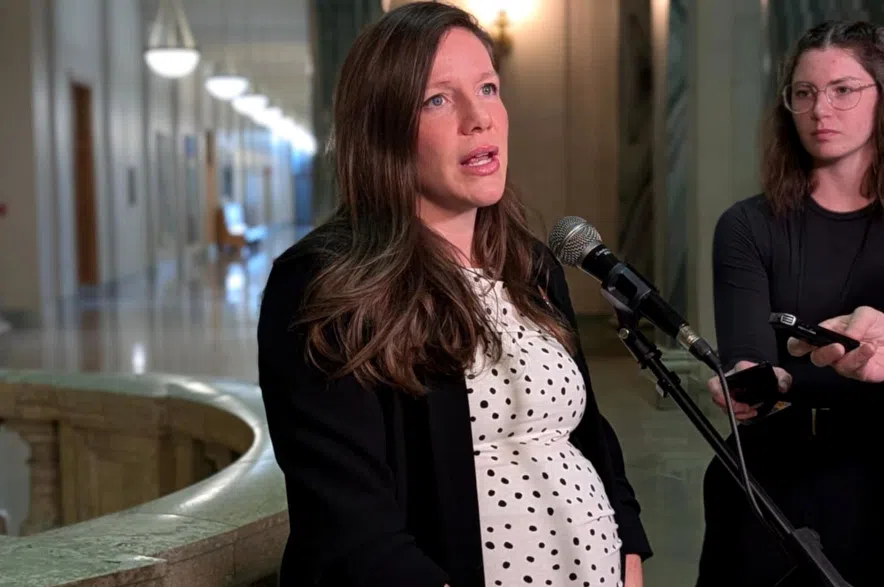When a person is in a life threatening health emergency they’ll likely head to the closest emergency room, but Saskatchewan’s NDP doesn’t think they should be greeted with a doctor on a screen when they get there.
Twenty-seven rural communities in the province have used the virtual doctor program for their emergency departments – in those cases, a person comes to the ER, is assessed by a nurse, and then the nurse calls 811 and the patient is put into a queue to be seen by a doctor through a web cam.
Health Minister Jeremy Cockrill on Wednesday called the virtual physician program a temporary stabilizing strategy.
“If we have a community where we don’t have physician coverage for an emergency department, this allows us to keep that emergency department open so that people don’t have to travel to the next community,” he explained.
Cockrill said it’s all about access to care and making sure it’s available as close to home as possible.
“The webcams aren’t doctors, I agree with that. The webcam is a tool so that doctors in our province can see more patients and offer care,” he said.
He said doctors being able to see more patients and provide more care is a good thing and government should be looking at expanding it.
“Obviously there may be trauma situations or high-level emergencies that we do have to go to a larger trauma centre in the province, but in terms of serving patients in rural Saskatchewan, I think this is a helpful program as we stabilize services in the different facilities,” said Cockrill.
Read more:
- ‘Something’s got to change’: Kipling to lose two doctors at end of January
- ‘Unacceptable’: HealthLine 811 outage Saturday leaves NDP asking questions
- Federal funding provided to improve health-care services in Saskatchewan
Conway agreed, there is a place for virtual care, but said it’s inappropriate when someone is giving birth or their life might be at stake.
“This is a sign of a health-care system that’s on its knees, this is not good news,” said Conway.
She said it’s concerning to see the health minister be proud of such a program, saying it’s not a solution to the province’s health-care crisis.
“We need a plan to move away from this model because it is not the gold-standard of care for Saskatchewan people and, frankly, for them to double-down on using virtual care for life-threatening situations and for deliveries is shocking,” said Conway.
Cockrill said the government’s priority is still in-person care and recruiting doctors, but that there is a role for virtual care.
The minister brought Dr. Johann Roodt, Saskatchewan Health Authority Physician Executive for Integrated Rural Health, with him to speak to media. He said the program started in July 2023 and has been extremely successful, safe and effective.
Roodt said there are things a virtual doctor can’t do, and how likely a patient is to be sent to another centre depends on the situation. He said the data he’s seeing from virtual doctor ERs is similar to others that don’t have them.
Cockrill said how long a facility has to use the virtual doctor program before getting an in-person doctor can vary from hours to weeks depending on the situation.
Conway argues the program is another band-aid solution from this government to fix a problem that’s been exacerbated by it’s approach – pointing to the program to send women out of province for breast health services and the reliance on travel nurses.
She said it wouldn’t be good to pull the rug out from under this plan overnight, but the government needs to revisit its plan to recruit and retain in-person doctors and do better.
The motion
On Wednesday, Conway introduced an emergency motion to ban the practice of using virtual doctors for patients giving birth to a child or experiencing a life threatening emergency.
During debate on the motion, Rural and Remote Health Minister Lori Carr amended it, changing the entire substance and replacing it, that the assembly “commends the Saskatchewan Health Authority and health-care providers for continuously looking for new ways to expand health-care services in all parts of Saskatchewan including making virtual health services available to people in rural and northern areas of Saskatchewan.”
Debate continued but didn’t finish before the end of proceedings so there was no vote on Wednesday.











